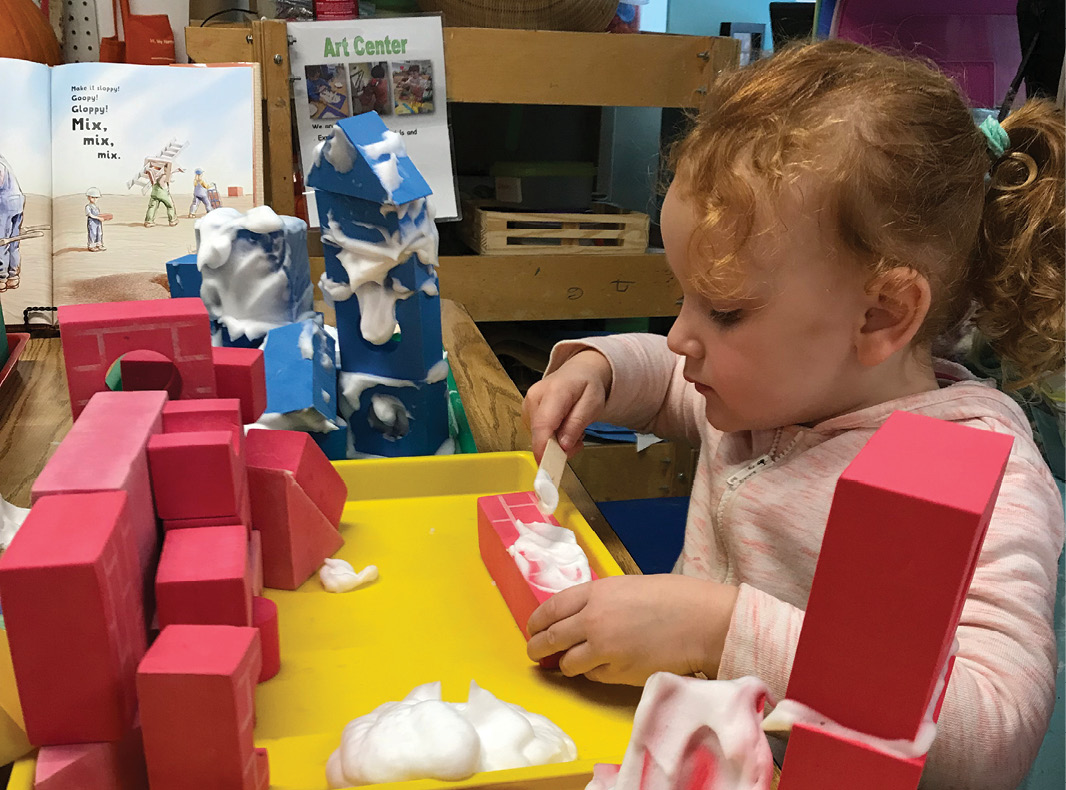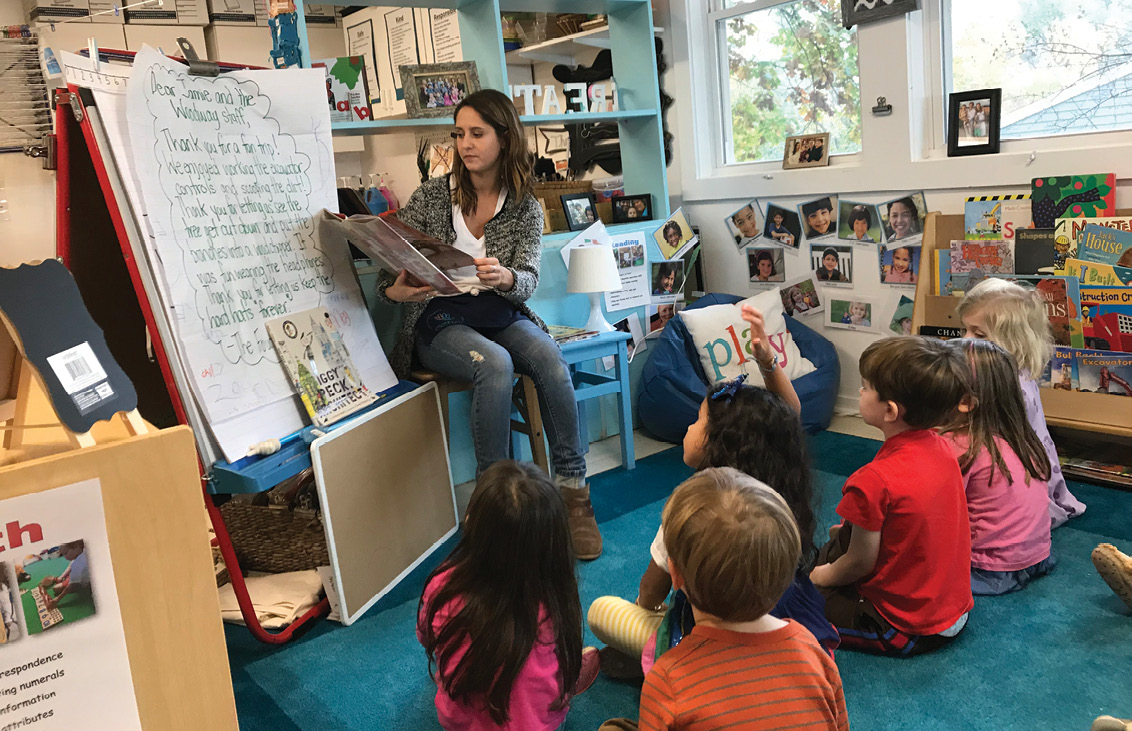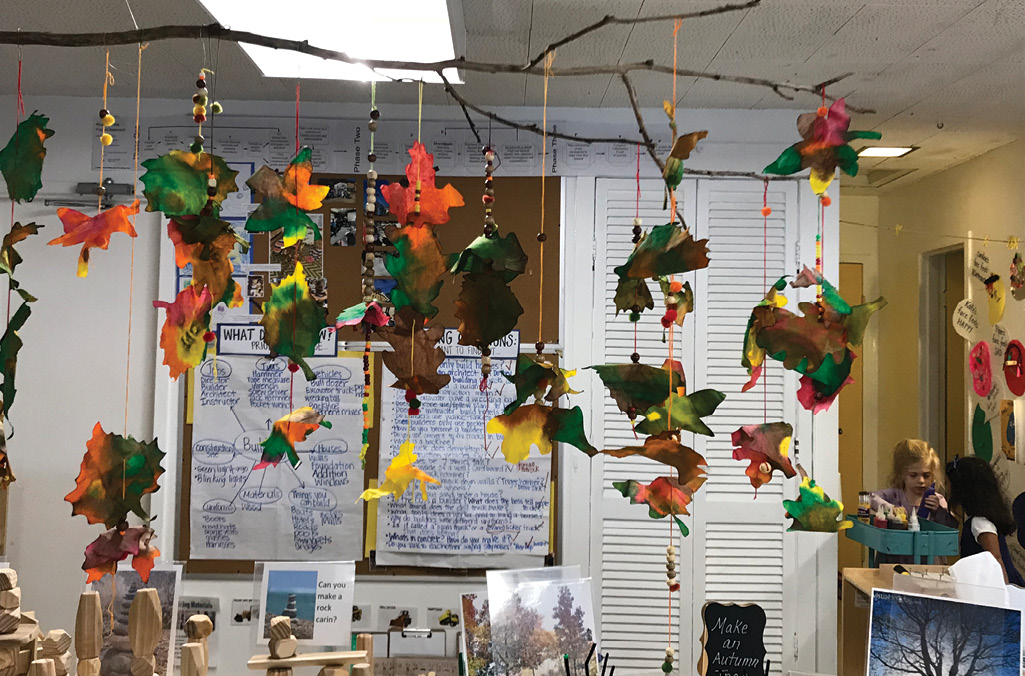You Know Youre a Preschool Teacher When You Can Listen to a Story About a Childs Weekend
Supporting children's language development is an essential goal shared by preschool teachers around the world. This is the beginning article in a serial nearly asking questions that foster rich conversations. Visiting a multifariousness of preschool settings, we'll consider the different types of questions teachers ask and heed to children's responses.
Cartoon on an adaptation of Blossom's Taxonomy, teachers in this serial demonstrate the many opportunities in that location are to inquire children a variety of questions that lead to meaningful discussions and deeper relationships between children and teachers. (See "Understanding Different Types of Questions.") Through these examples, we hope teachers volition reflect on how their own questions tune in to children'due south thinking.
Let's await first at a pocket-size cooperative preschool I visited in suburban Connecticut. Observing adults and children in the classrooms, I was struck past the style the children's work—drawings, dictations, artwork, and more than—was displayed around the room. Their work offered countless chat starters. Teachers asked questions about the thematic unit (construction) and the class's seasonal activities (making autumn leaves), which were intended to help children develop concept knowledge and vocabulary. The children eagerly shared the interesting things they were learning in the classroom and on field trips.
Understanding Different Types of Questions
Bloom'southward Taxonomy has long been used to generate questions. Here, nosotros have an adapted version designed to support preschool teachers. The point is not to move upwards the steps, but to ask a variety of questions and spark meaningful conversations.
When children are asked questions, they must use one, some, or all of the categories below to come up with an answer. The more complex the question, the richer children'south linguistic communication and thinking.
Remember–identify, name, count, repeat, recall
Understand–depict, discuss, explicate, summarize
Utilize–explicate why, dramatize, identify with/relate to
Clarify–recognize alter, experiment, infer, compare, contrast
Evaluate–express opinion, judge, defend/criticize
Create–make, construct, design, writer
While it'due south vital to encourage children to engage in more complex thinking, all questions have value.Remembering information is the foundation children demand to answer more complex questions, such every bit "How volition y'all effigy out the number of plates we need on the table for lunch?" Or before children cancreate new characters and make up a new ending to a story, they demand to first remember that there are iii piffling pigs and a big bad wolf andempathise that the pigs have to figure out how to build stronger houses.
As you lot reflect on the questions you ask, also remember about each of the children you piece of work with. Employ these question categories to guide yous as you lot select unlike types of questions to scaffold individual children'southward thinking and learning. When working with children who do not still take much expressive language or feel answering circuitous questions—or with children who are dual linguistic communication learners—it is especially important to inquire a range of questions (starting with questions that require less language).
Questions about thematic units
Talk with children about their activities. By listening to children and tuning in to their responses to different types of questions, teachers can scaffold children'south learning. Questions can atomic number 82 children to think about and express more than circuitous ideas.
Classroom activities
In the art heart, children were building structures with foam blocks. They used shaving cream to "cement" the blocks together. On field trips to construction sites, they were introduced to the discussionmortar after seeing mortar being used to lay bricks.

Teachers' questions and children's responses
Instructor: What were you lot thinking about when y'all were gluing?(Analyze)
Kid:A business firm, where the chimney is. . . . The bedrooms are upstairs. The people first here [indicates stairs inside the front end door], . . . become upwards, . . . playrooms, bedrooms.
Teacher [pointing to another attribute of the structure]: Tell me well-nigh this.(Empathize)
Field trips
Children made drawings on their field trips, which were displayed on the bulletin lath. Many of their illustrations included structure vehicles.
Teachers' questions and children'southward responses
Instructor: What did you lot find about the vehicles?(Remember/Understand)
Child: They have levers.
Teacher: What exercise levers practise?(Understand)
Child:Dissimilar ones pull each matter, and and then they practise what they exercise.
Read-alouds
For a whole-group read-aloud, Megan, the educatee instructor, was readingBillions of Bricks: A Counting Book about Building, by Kurt Cyrus.

Teachers' questions and children'south responses
Megan [pointing to an illustration in the volume]: Look at the bags at the bottom of the page. They say Mortar Mix. I wonder what Mortar Mix means? (Apply)
Child: They're making a firm!
Megan: What exercise you lot detect?(Sympathise) Maybe we should bring the book on our trip and inquire some of these questions.
Child: The stuff being poured is concrete.
Megan: What are your predictions on what will happen next in the story?(Analyze)
Kid: They're gonna make cement.
Questions about indoor and outdoor environments
Teachers referred to the physical environment to engage the children in conversations. The children were excited to talk most topics that are of import to them, including things they made. It is of import to ask children open up-ended questions, listen to their responses, and then talk near what interests them.
Children's piece of work
Individual mobiles—constructed using beads, pom-poms, and paper leaves—were hung in the classroom. The leaves were painted with watercolors in autumn colors. The mobiles were all strung from one big tree branch suspended overhead.

Teachers' questions and children's responses
Teacher: I was wondering how you fabricated your mobile.(Understand)
Kid: Nosotros used needles and leaves. We put watercolor on with those niggling droplet things.
Teacher: Tell me more. . . . What else . . . ? (Sympathize)
More children joined in, expanding the conversation. They described differences between the newspaper leaves and existent ones and compared the ruby-red leaves with the green ones.
Things that demonstrate value for children'southward families
Photographs of children's families were displayed around the room.
Teachers' questions and children'southward responses
Teacher:What else is really special about your grade?(Evaluate)
Kid [pointing to two framed photos of families in the dramatic play surface area]:We bringed in the pictures.
Teacher:What's the aforementioned and what's different about those photos and about those families?(Analyze)
The child mentioned that the people were different, they were playing in one of the photos, and there were differences in the frames.
Sandbox play
To make cakes, 2 children were digging in the sand and spooning it into cake pans.
Teachers' questions and children's responses
Teacher:Tell me virtually what y'all are making.(Remember)
Child: Pie, actually, block.
Teacher: What kind?(Remember)
Kid:Vanilla.
Teacher: What are you lot putting in it? What are the ingredients?(Create)
Child: Vanilla with blueberries and sprinkles.
Teacher:What shape volition your cake be?(Remember)
Child: Heart.
Teacher:Is there a reason you're making information technology a eye shape?(Evaluate)
Child:We're making names on information technology.
The course talked about what messages their names start with and how they spell their names.
Conclusion
Request meaningful questions that are interesting to each kid takes a lot of practise! In the next commodity, we will listen to teachers' questions and children's responses in Atlanta, Georgia.
Source: https://www.naeyc.org/resources/pubs/tyc/apr2018/conversations-with-children
0 Response to "You Know Youre a Preschool Teacher When You Can Listen to a Story About a Childs Weekend"
Postar um comentário